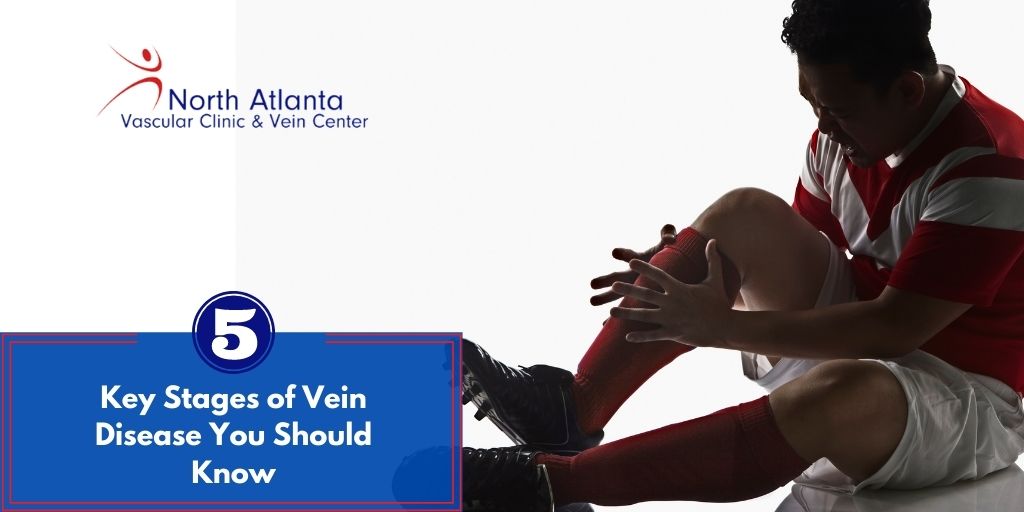



Vein disease occurs when the veins are unable to carry blood to the heart, causing blood to pool in the leg veins. The Society for Vascular Medicine reveals that 30 million people suffer from vein disease, but only 10% of people are getting treatment. Vein disease is manageable, but if left untreated, it can lead to serious health complications.
Here are the symptoms and five stages of vein disease that you need to know.
A person with vein disease may experience the following symptoms:
Five Stages of Vein Disease
Stage 1: Spider Veins or Reticular Veins
Spider veins are smaller dilated capillaries and veins that appear just below the surface of the skin. They may cluster with other veins and appear like tiny threads or streaks. Reticular veins appear as blue or red spider-webs on the skin surface but are smaller than varicose veins. Like varicose veins, reticular veins do not protrude above the skin and are often found on the inner thighs, back of the thigh, and occasionally appear on the face.
Causes of Spider and Reticular Veins
Damaged or weakened veins often cause reticular veins. Other factors that may increase your risk for spider and reticular veins are:
Stage 2: Varicose Veins
Varicose veins are large, dilated veins that appear as twisted veins just below the skin’s surface. Though varicose veins are viewed as a cosmetic issue, they can cause pain.
Causes and Risk Factors of Varicose Veins Damaged or weakened valves inside the veins cannot carry blood to your heart, causing the blood to pool and the veins to stretch, leading to varicose veins.
Other factors that can lead to varicose veins include:
Symptoms of Varicose Veins
Stage 3: Swelling of the Legs (Advanced Stage)
When varicose veins are left untreated, it can cause blood to pool in the leg veins and then lead to swelling in the legs and ankles.
Causes of Leg Swelling
Symptoms of Leg and Ankle Swelling
Stage 4: Skin Discoloration (Lipodermatosclerosis)
During this stage, your skin becomes thinner and discolored. Also, it is vulnerable to injury, cracks, and bleeding, which will require more time to heal.
Causes of Skin Discoloration:
Symptoms of Skin Discoloration
Stage 5: Ulcers and Open Wounds (Most Advanced Stage)
In this stage, venous congestion prevents blood circulation and nutrition to the skin, causing ulcers. Categories of skin ulcers include:
Venous stasis contributes to 80-90% of leg ulcers if left untreated.
Causes of Leg Ulcers
Symptoms of Leg Ulcers
Becoming aware of the five stages of vein disease can help you determine whether you are experiencing any vein disease symptoms and take the necessary steps to protect your health.
Schedule an appointment with us to receive high-quality vein disease treatment in Johns Creek, Cumming, Roswell, and Lawrenceville.